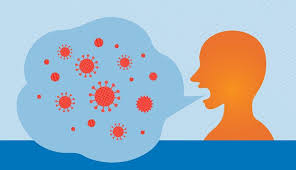By Kimber Solana

Patient saliva was found not to be the major source of the microbes in aerosols generated during dental procedures, according to Ohio State University researchers, who analyzed the genetic makeup of the organisms detected in aerosols.
The findings, published May 12 in the
Journal of Dental Research, is the latest study to demonstrate that visiting the dentist remains safe, with low risk for transmission of the SARS-CoV-2 virus. SARS-CoV-2 spreads mainly through respiratory droplets, and dental procedures are known to produce an abundance of aerosols, which led to fears that saliva during a cleaning or a restorative procedure could make the dentist's chair a high-risk location.
“These findings should help us open up our practices, make ourselves feel safe about our environment and, for patients, get their oral and dental problems treated,” said lead author Purnima Kumar, D.D.S., Ph.D., professor of periodontology at Ohio State, in a news release.
“Getting your teeth cleaned does not increase your risk of COVID-19 infection any more than drinking a glass of water from the dentist’s office does,” added Dr. Kumar, a member of the ADA Council on Scientific Affairs.
The researchers set out to characterize the microorganisms generated during dental procedures to quantify the contribution from saliva by collecting samples from personnel, equipment and other surfaces reached by aerosols during a variety of dental procedures.
What they found was that no matter the procedure or where the condensate had landed, microbes from irrigants contributed to about 78% of the organisms in aerosols while saliva, if present, accounted for 0.1% to 1.2% of the microbes distributed around the room.
For the study, the team enrolled 28 patients receiving dental implants, restorations using high-speed drills, or ultrasonic scaling procedures in Ohio State's College of Dentistry between May 4 and July 10, 2020. Researchers collected samples of saliva and irrigant (the water-based cleaning solutions used to flush out the mouth) before each procedure and, 30 minutes after the procedure, aerosol remnants — condensate — from providers' face shields, the patient's bib and an area 6 feet away from the chair.
Salivary bacteria were detected in condensate from only eight cases and of those, five patients had not used a pre-procedural mouth rinse. The SARS-CoV-2 virus was identified in the saliva of 19 patients, but was undetectable in aerosols in any of the cases.
The findings make sense, Dr. Kumar said: Irrigant dilutes saliva — a "thick, viscous" substance — by an estimated 20- to 200-fold. These findings help to explain the outcome reported in the 2020 Journal of the American Dental Association
study that less than 1% COVID-19 positivity rate among dentists.
"Dental surgeons and hygienists are always at the forefront of the war against bacteria in the mouth, and they of course did not feel safe because they are front-line workers surrounded by aerosol," said Dr. Kumar, who has a periodontology practice of her own and was one of the procedure operators in the study.
Hopefully this will set patients’ minds at ease because when you do procedures, it is the water from the ultrasonic equipment that's the primary source of aerosols rather than saliva, making the risk of spreading SARS-CoV-2 infection not high, she said.
"However, we should not lose sight of the fact that this virus spreads through aerosol, and speaking, coughing or sneezing in the dental office can still carry a high risk of disease transmission,” Dr. Kumar said.